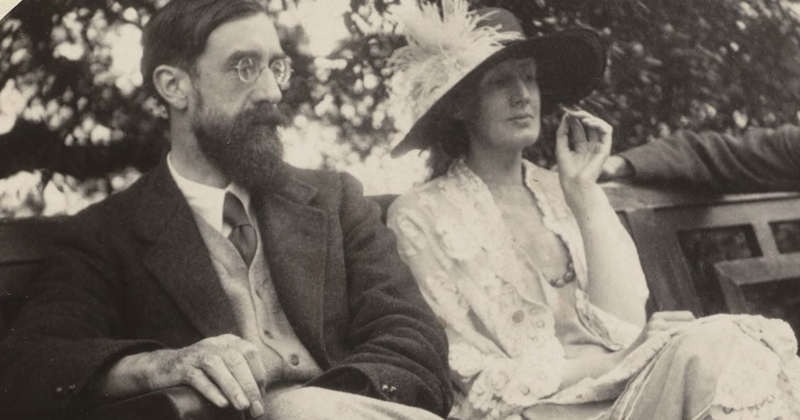On the 31st
of May 1920, Virginia Woolf went gardening. Here’s what she wrote in her
diary: “The first pure joy of the garden . . . weeding all day to
finish the beds in a queer sort of enthusiasm which made me say this is
happiness. Gladioli standing in troops; the mock orange out. We were out
till nine at night, though the evening was cold. Both stiff
and scratched all over today, with chocolate earth in our nails.” This
is the commentary of a practical, hands-on gardener, a view of the
garden wonderfully different from the way in
which gardens surface in her novels. But, before considering that, I
want to look at where it was that she was gardening, and what that
garden was like.
Virginia and Leonard Woolf bought Monk’s
House, at Rodmell, near Lewes, in July 1919, when she was 37. It was an
old, weather-boarded house, disconcertingly austere by 21st-century
standards—no electricity or running water, no bathroom, a privy in the
garden, and only gradually did the Woolfs overcome these deficiencies.
It had three-quarters of an acre of garden, and this, certainly for
Leonard, seems to have been the prime attraction. It is clear that he
was the gardener-in-chief, with Virginia as an interested accomplice and
frequent assistant. There was already a fine orchard (apples, plums,
pears, cherries), and as time went on Leonard laid out the hard
landscaping—the creation of a garden composed of discrete areas, or
rooms, united by brick-paved paths, that is the basis of the garden as
it is today, now in the care of the National Trust.
They evidently flung themselves at the
garden with immediate enthusiasm. In September 1919 Virginia wrote: “We
have been planting tiny grains of seed in the front bed, in the pious or
religious belief that they will resurrect next spring as Clarkia,
Calceolaria, Campanula, Larkspur and Scabious.” A list of annuals—a nice
mix except for the calceolaria, which fills me with horror, a nasty
bulbous yellow spotty thing which would have offended
the palette of otherwise pinks and blues. I do hope it failed to
resurrect. But that was evidently, for Leonard, the start of a tradition
of growing from seed; later, he had greenhouses.
Caroline Zoob and her husband, Jonathan, were tenants of the National Trust at Monk’s House for ten years, and her fine book—Virginia Woolf’s Garden—is
testimony to their talented management of the garden. The brief was to
preserve as much as possible of Leonard’s original layout and, indeed,
some of the Woolf planting preferences. Leonard and Virginia had a taste
for strong colors. “Our garden is a perfect variegated chintz: asters,
plumasters, zinnias, geums, nasturtiums and so on: all bright, cut from
colored papers, stiff, upstanding as flowers
should be,” Virginia wrote in a letter. That description has me a bit
doubtful, and the sumptuous photographs in Caroline Zoob’s book show
planting schemes and palettes rather more subtle and in tune with
contemporary taste, though, loyally, zinnias were still grown from seed
on their watch, one of Leonard’s favorites. Hardly seen elsewhere,
nowadays, out of fashion, like the red-hot pokers—kniphofia—that he had
(and which flare up in To the Lighthouse,
as we shall see): “. . . the garden is full of zinnias. The zinnias are
full of slugs. L goes out at night with a lantern and collects snails,
which I hear him cracking . . .” Virginia may have left pest control to
him, but she certainly got weeding: “Very soon, in any occupation, one
makes a game of it. I mean . . . that one gives characters to weeds. The
worst is the fine grass which has to be sifted out conscientiously. I
like uprooting thick dandelions and groundsel.” ,,, [mehr] https://lithub.com/penelope-lively-on-virginia-woolf-serious-gardener/

Keine Kommentare:
Kommentar veröffentlichen